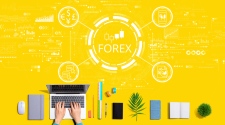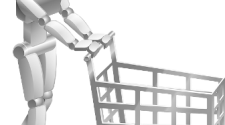The internet and ecommerce are causing global marketplace upheavals. Small mom and pop stores are closing up shop because stores online are snatching away their business; brick-and-mortar pharmacies are shutting down because people can buy their drugs and fill their prescriptions online.
Traditional retailers are also feeling the pinch and closing up thousands of outlets partly because there’s fierce competition from smaller retailers and ecommerce stores online with access to bar codes at cheaper rates, excellent quality at reduced or competitive prices, better customer service, faster product delivery and more importantly, the ability to engage with prospects and customers on all channels.
The fact is that the retailing industry is currently facing some considerable challenges in 2015. Those who can surmount these challenges and adapt will go on to enjoy incredible profits. We will discuss some of those challenges and opportunities here.
Increased Demand for Quality from Well-Informed Prospects
Consumers now know that they have a choice and a voice. They know that there are lots of alternative retailers to patronize. Because prospects are often spoilt for choice, their demands have increased. For those who are unprepared, this can lead to dwindling sales and profits.
For instance, if Retail Store A sells pants for $50 with in-store pickup and Store B matches the price with an added perk of free shipping and maybe a 5% off coupon, there are many people who would choose the latter. This is a rather basic example, but it illustrates the point.
In fact, a 2013 survey by leading professional services firm, Deloitte, showed that 60% of the survey participants considered themselves more informed through their access to competitive pricing, coupons and even alternative options.
As a result, customers are demanding better customer service, better bargains, increased speed and ease of delivery, a stellar reputation, and excellent products and services.
All retailers need to evolve to meet these demands by raising the bar — providing better customer service, competitive pricing, perks and other incentives while continuing to serve a high-quality product or service.
The Growing and Often Sudden Shifts in Demand
Over time, demand and consumer interest are bound to shift. This is truer in today’s fast-paced marketplaces than it ever has been — products quickly become outdated. What was in demand a few months ago can suddenly go out of fashion, or even become obsolete in the face of emerging products. It poses quite a challenge for the retailer, who needs to know just what to stock.
This challenge means that retailers have to look for ways to predict future trends in order to prepare for and ride the wave as soon as it starts building for maximum profit and have just enough inventory that’ll sell out at the time the demand for those products shrink. While the ideal is always steady and sustainable products, this is not always possible — and it is certainly denying the many advantages of staying ahead of the curve.
Active Window-Shopping Among Mobile Shoppers
Over the last 5 years or so, there’s been an increase in window-shopping or “showrooming” — a fancy word for shoppers coming into your store and comparing your prices and incentives to what is available online on your website and app or other retailers’ and then going online to purchase. As at 2012/2013, about 70% of these “showroomers” went on to make their purchases online.
This has led to a significant decrease in in-store purchases. This is a huge challenge for retailers because they could be losing customers in droves. One of the best ways to tackle this would be to offer special deals for in-store purchases. Investing in your customer service experience is another way to set yourself apart, since at a physical location you have more opportunities to meet the needs of your customers. The shopping experience, in general, represents a good opportunity. Although you can only match the ease of ordering a product online with the instant gratification of physically putting your products into the hands of your customers, you can in much the same way create a different experience that matches the desires of your marketplace in ways that encourage them to stop in rather than order online.
Increased Access to Customer Data by Competition
Because everyone has access to the same networks, it is possible for rival retailers to pay for ads and reach the same mobile audience that you actively pursue. Big data has made all of this possible. In fact, retailers can target mobile subscribers by demography.
We’re talking sex, age, interests, income bracket, hobbies, passions… the list is endless really. This means that “your list” of prospects may not be as exclusive as you’d think. Taking full advantage of the resources you share with your competitors is simply a must, and learning from your competitors successes and failures in this regard is similarly invaluable. It’s just as important that you properly capitalize on the customer data that is, in fact, exclusive to you. When you get your barcodes packages from Speedy Barcodes, make sure that you take full advantage of the ability to use inventory and sales-tracking software to attain a real understanding of what your inventory does for you, and most importantly, the behavior of your customers.
Increased Demand for Perpetual Access to Products and Services
This simply means finding omnichannel options for the distribution and the availability of your products and services. Customers don’t want to have to do in-store trading to get whatever they want anymore. If they’re at home, they want to complete their purchases at home. If they’re passing your storefront, they want to stop in and receive good service and their purchases in hand.
The average consumer has to shuffle between multiple screens every time. We’re talking TV, phones, tablets and so on. This means physical stores, responsive websites, shopping apps and social media.
The truth is that the traditional one-to-many marketing approach is not as effective at targeting the omnichannel consumer. In today’s world, there’s now a limit to how much TV and radio ads are reaching audiences with more diverse behaviors and habits.
Potential consumers are selectively binge watching TV shows on their mobile devices, cutting out advertisements and generally listening less to traditional radio or TV. Retailers need to invent ways to reach these individuals on all their devices in real time with personalized ads, shopping options, even finding new ways to merge marketing channels, as you can see even today with QR codes bridging the gap between traditional and digital methods.
Further Reading:
http://www2.deloitte.com/us/en/pages/about-deloitte/articles/press-releases/shoppers-add-pinch-sparkle-dash.html
http://www.sanderson.com/blog/multi-channel/bid/276963/The-Top-Three-Challenges-Facing-Retailers
http://www.monash.edu.au/news/show/challenges-and-opportunities-of-omni-channel-retailing
Oscar King is a freelance writer and professional student who contributes articles and insights into business trends and offers advice for the small business owner and aspiring entrepreneur.
















